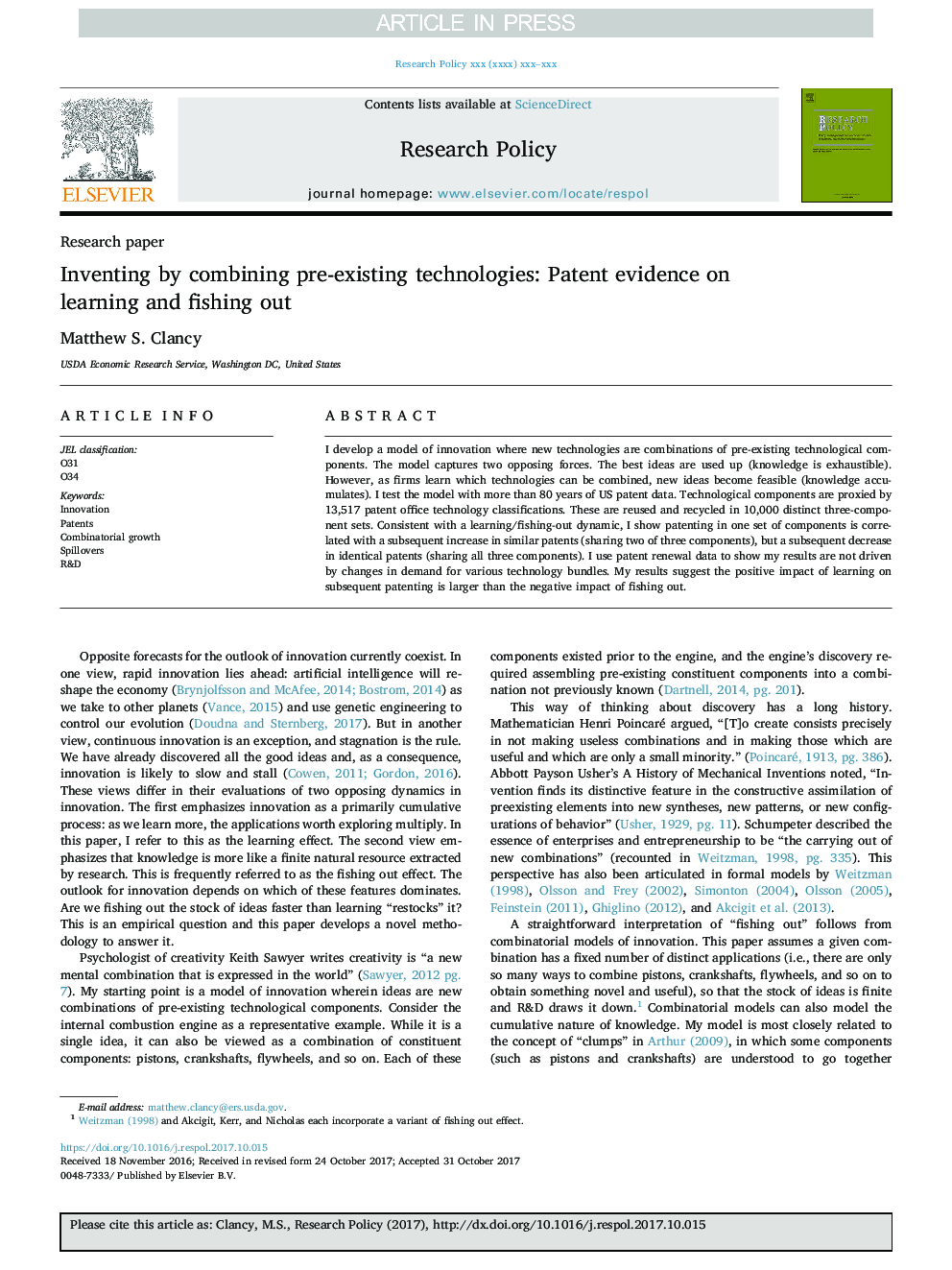| Article ID | Journal | Published Year | Pages | File Type |
|---|---|---|---|---|
| 7384598 | Research Policy | 2018 | 14 Pages |
Abstract
I develop a model of innovation where new technologies are combinations of pre-existing technological components. The model captures two opposing forces. The best ideas are used up (knowledge is exhaustible). However, as firms learn which technologies can be combined, new ideas become feasible (knowledge accumulates). I test the model with more than 80 years of US patent data. Technological components are proxied by 13,517 patent office technology classifications. These are reused and recycled in 10,000 distinct three-component sets. Consistent with a learning/fishing-out dynamic, I show patenting in one set of components is correlated with a subsequent increase in similar patents (sharing two of three components), but a subsequent decrease in identical patents (sharing all three components). I use patent renewal data to show my results are not driven by changes in demand for various technology bundles. My results suggest the positive impact of learning on subsequent patenting is larger than the negative impact of fishing out.
Keywords
Related Topics
Social Sciences and Humanities
Business, Management and Accounting
Business and International Management
Authors
Matthew S. Clancy,
